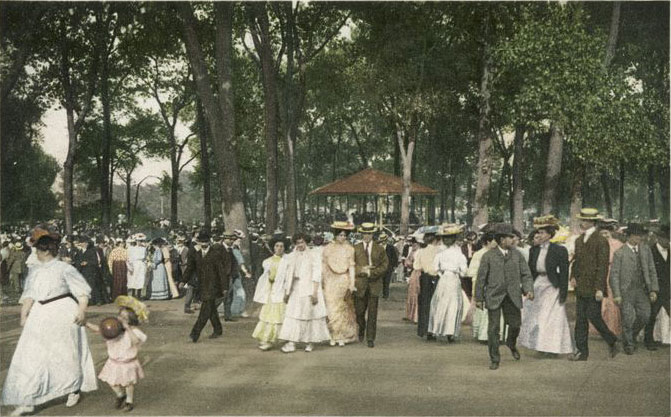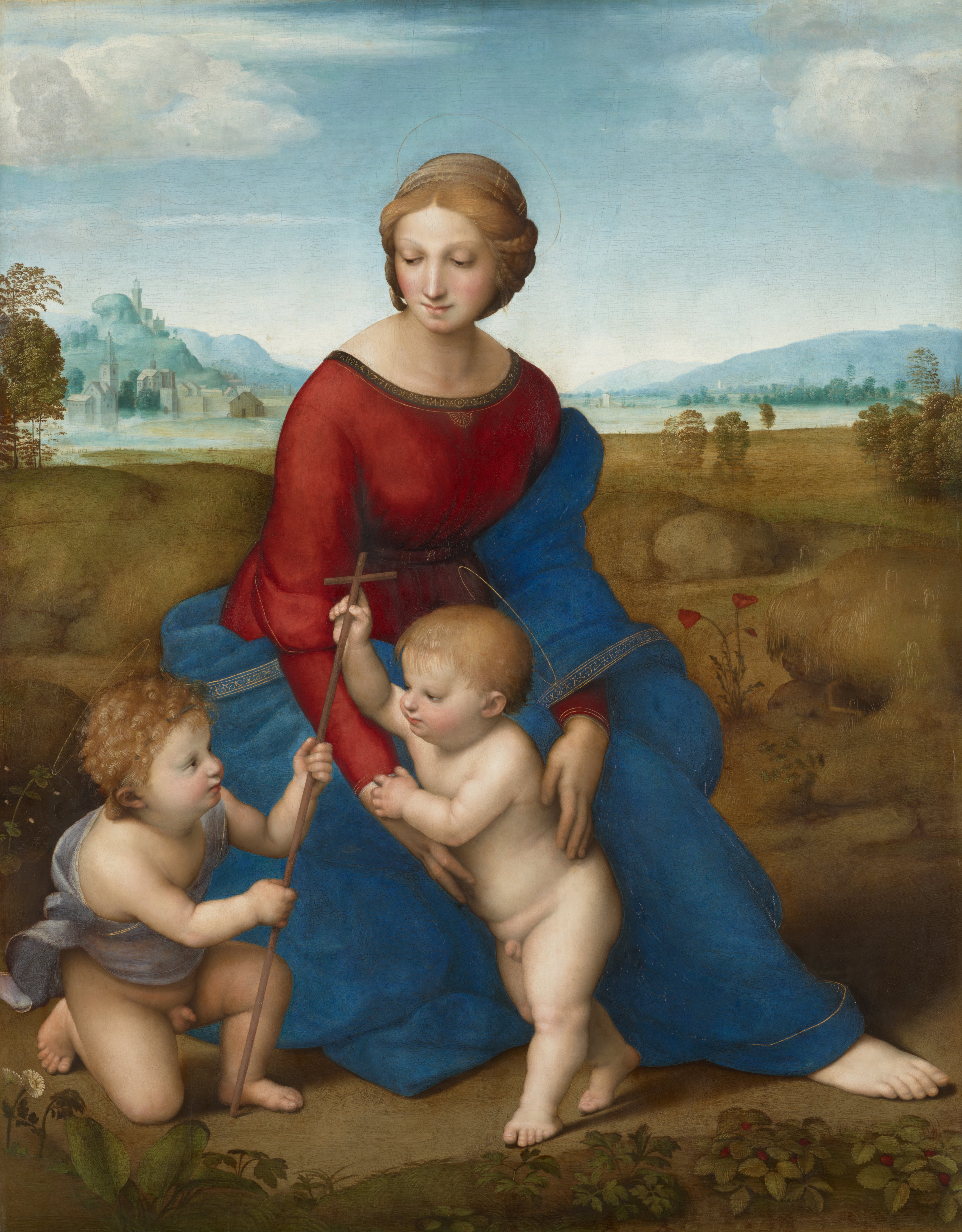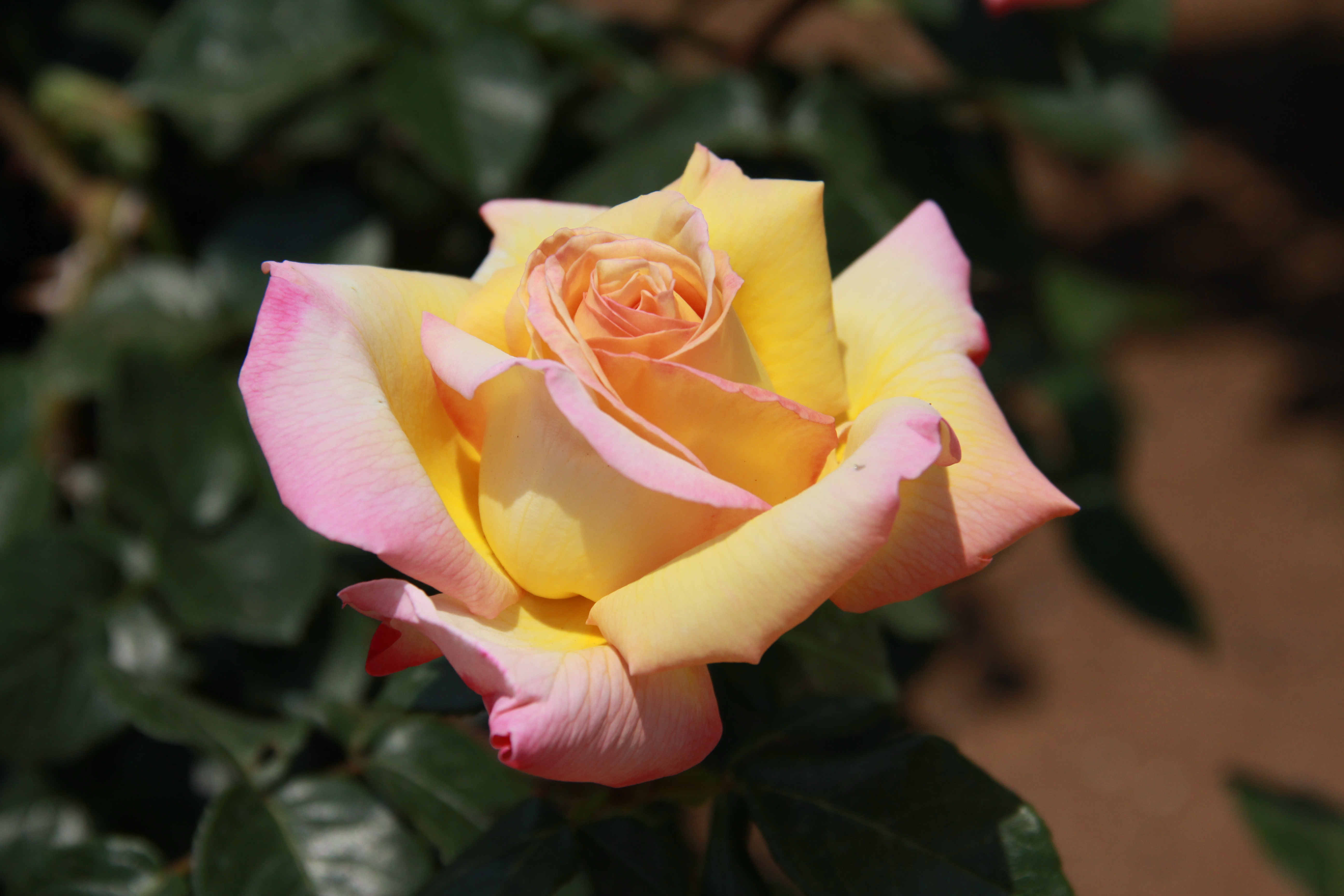|
Volksgarten, Vienna
The Volksgarten (People's Garden) is a public park in the Innere Stadt, the first district of Vienna, Austria. Opened in 1823, it was Vienna's first public park. History In 1809, following France's decisive victory over Austria in the War of the Fifth Coalition, French troops occupying Vienna destroyed a major defensive bastion of the Hofburg, the Burgbastei. Instead of rebuilding it, the area around the Hofburg was redesigned. Court architect Ludwig Gabriel von Remy planned the construction of what is now known as the Heldenplatz, flanked on either side by two parks: the Volksgarten and the Burggarten. Remy collaborated with gardener Franz Antoine the Elder, who was responsible for the horticultural design. During the park’s construction, architect Pietro Nobile designed the Theseustempel, a recreation of the Temple of Hephaestus in Athens, built specifically to house ''Theseus Slaying the Centaur'', a statue by Antonio Canova. The adjacent Paradeisgartel, located on the ... [...More Info...] [...Related Items...] OR: [Wikipedia] [Google] [Baidu] |
Urban Park
An urban park or metropolitan park, also known as a city park, municipal park (North America), public park, public open space, or municipal gardens (United Kingdom, UK), is a park or botanical garden in cities, densely populated suburbia and other municipal corporation, incorporated places that offers open space reserve, green space and places for recreation to residents and visitors. Urban parks are generally Landscape architecture, landscaped by design, instead of lands left in their natural state. The design, operation and maintenance, repair and operations, maintenance is usually done by government agencies, typically on the local government, local level, but may occasionally be contracted out to a park conservancy, "friends of" group, or private sector company. Depending on size, budget, and land features, which varies considerably among individual parks, common features include playgrounds, gardens, hiking, running, fitness trails or paths, bridle paths, sports fields and c ... [...More Info...] [...Related Items...] OR: [Wikipedia] [Google] [Baidu] |
Ringstrasse
The Ringstrasse or Ringstraße (pronounced �ɪŋˌʃtʁaːsə ⓘ, lit. ''ring road'') is a 5.3 km (3.3 mi) circular grand boulevard that serves as a ring road around the historic city centre, the Innere Stadt, of Vienna, Austria. The road is built where the city walls once stood. The Ring, as it is colloquially known, was built, along with grand buildings on either side of the road, in the second half of the 19th century. The road runs clockwise, from the Urania to the Schottenring, and is divided into nine parts. Because of its architectural beauty and history, the Ringstrasse is designated by UNESCO as part of the Historic Centre of Vienna World Heritage Site. History The grand boulevard was constructed to replace the city walls, which had originally been erected during the 13th century. These walls were initially funded by the ransom payment obtained from the release of Richard the Lionheart, King of England, who had been captured near Vienna on his return from the Third ... [...More Info...] [...Related Items...] OR: [Wikipedia] [Google] [Baidu] |
Kunsthistorisches Museum
The Kunsthistorisches Museum Wien ( "Vienna Museum of art history, Art History", often referred to as the "Museum of Fine Arts, Vienna") is an art museum in Vienna, Austria. Housed in its festive palatial building on the Vienna Ring Road, it is crowned with an octagonal dome. The term ''Kunsthistorisches Museum'' applies to both the institution and the main building. It is the list of largest art museums, largest art museum in the country and one of the most important museums worldwide. Emperor Franz Joseph I of Austria-Hungary opened the facility around 1891 at the same time as the Natural History Museum, Vienna which has a similar design and is directly across Maria-Theresien-Platz. The two buildings were constructed between 1871 and 1891 according to plans by Gottfried Semper and Baron Karl von Hasenauer. The emperor commissioned the two Ringstraße museums to create a suitable home for the Habsburgs' formidable art collection and to make it accessible to the general publ ... [...More Info...] [...Related Items...] OR: [Wikipedia] [Google] [Baidu] |
Vienna City Hall
The Vienna City Hall (; Help:IPA/Standard German, [ʁaːtˌhaʊs]) is the town hall of Vienna, Austria, located in the Innere Stadt on the Rathausplatz, Vienna, Rathausplatz, off the Ringstrasse. The Gothic Revival architecture, Gothic Revival building was designed by Friedrich von Schmidt and constructed between 1872 and 1883. It houses the offices of the List of mayors of Vienna, Mayor of Vienna, as well as the Municipal Council and Landtag of Vienna, city and state government. History Background By 1850, Vienna's rapid expansion, driven by the integration of nearby suburbs, made the Altes Rathaus, Vienna, Altes Rathaus on Wipplingerstraße inadequate. With the demolition of city walls between 1858 and 1865 to build the Ringstrasse, Ringstraße, a competition for a new city hall was held in 1868. German architect Friedrich von Schmidt won the commission, and the new building was planned for the Ringstraße, alongside other major constructions like the Vienna State Opera (1 ... [...More Info...] [...Related Items...] OR: [Wikipedia] [Google] [Baidu] |
Biotope
A biotope is an area of uniform environmental conditions providing a living place for a specific assemblage of flora (plants), plants and fauna (animals), animals. ''Biotope'' is almost synonymous with the term habitat (ecology), "habitat", which is more commonly used in English-speaking countries. However, in some countries these two terms are distinguished: the subject of a habitat is a population, the subject of a biotope is a ''biocoenosis'' or "biological community". It is an English loanword derived from the German '':de:Biotop, Biotop'', which in turn came from the Greek ''bios'' (meaning 'life') and ''topos'' ('place'). (The related word ''geotope'' has made its way into the English language by the same route, from the German '':de:Geotop, Geotop''.) Ecology The concept of a biotope was first advocated by Ernst Haeckel (1834–1919), a German zoologist famous for the recapitulation theory. In his book ''General Morphology'' (1866), which defines the term "ecology", he st ... [...More Info...] [...Related Items...] OR: [Wikipedia] [Google] [Baidu] |
Garden Roses
Garden roses are predominantly Hybrid (biology), hybrid roses that are grown as ornamental plants in private or public gardens. They are one of the most popular and widely cultivated groups of flowering plants, especially in temperate climates. An enormous number of garden cultivars has been produced, especially over the last two centuries, though roses have been known in the garden for millennia beforehand. While most garden roses are grown for their flowers, often in dedicated rose gardens, some are also valued for other reasons, such as having ornamental fruit, providing ground cover, or for hedge, hedging. The cultivars are classified in a number of different and overlapping ways, generally without much reference to strict botany, botanical principles. Taking overall size and shape, the most common type is the bush rose, a rounded plant from 2 foot up to about 7 foot tall, above which height roses generally fall into the "'climbing and rambling'" class, the latter spreading wi ... [...More Info...] [...Related Items...] OR: [Wikipedia] [Google] [Baidu] |
Buxus
''Buxus'' is a genus of about seventy species in the family Buxaceae. Common names include box and boxwood. The boxes are native to western and southern Europe, southwest, southern and eastern Asia, Africa, Madagascar, northernmost South America, Central America, Mexico and the Caribbean, with the majority of species being tropical or subtropical; only the European and some Asian species are frost-tolerant. Centres of diversity occur in Cuba (about 30 species), China (17 species) and Madagascar (9 species). They are slow-growing evergreen shrubs and small trees, growing to 2–12 m (rarely 15 m) tall. The leaves are opposite, rounded to lanceolate, and leathery; they are small in most species, typically 1.5–5 cm long and 0.3–2.5 cm broad, but up to 11 cm long and 5 cm broad in ''B. macrocarpa''. The flowers are small and yellow-green, monoecious with both sexes present on a plant. The fruit is a small capsule 0.5–1.5 cm long (to 3 ... [...More Info...] [...Related Items...] OR: [Wikipedia] [Google] [Baidu] |
Rose
A rose is either a woody perennial plant, perennial flowering plant of the genus ''Rosa'' (), in the family Rosaceae (), or the flower it bears. There are over three hundred Rose species, species and Garden roses, tens of thousands of cultivars. They form a group of plants that can be erect shrubs, climbing, or trailing, with stems that are often armed with sharp Thorns, spines, and prickles, prickles. Their flowers vary in size and shape and are usually large and showy, in colours ranging from white through pinks, reds, oranges and yellows. Most species are native to Asia, with smaller numbers native to Europe, North America, and Northwest Africa. Species, cultivars and hybrid (biology), hybrids are all widely grown for their beauty and often are fragrant. Roses have acquired cultural significance in many societies. Rose plants range in size from compact, miniature roses to climbers that can reach seven meters in height. Different species hybridize easily, and this has been use ... [...More Info...] [...Related Items...] OR: [Wikipedia] [Google] [Baidu] |
Burgtheater
The Burgtheater (; literally: "Castle Theater" but alternatively translated as "(Imperial) Court Theater", originally known as '' K.K. Theater an der Burg'', then until 1918 as the ''K.K. Hofburgtheater'', is the national theater of Austria in Vienna. It is the most important German-language theater and one of the most important theatres in the world.aeiou-Burgtheater "Burgtheater" (history) ''Encyclopedia of Austria'', Aeiou Project, 1999 The Burgtheater was opened in 1741 and has become known as ''die Burg'' by the Viennese population; its theater company has created a traditional style and speech typical of Burgtheater performances. History The original Burgtheater was set up in a |
Baroque Garden
The Baroque garden was a style of garden based upon symmetry and the principle of imposing order on nature. The style originated in the late-16th century in Italy, in the gardens of the Vatican and the Villa Borghese gardens in Rome and in the gardens of the Villa d'Este in Tivoli, and then spread to France, where it became known as the ''jardin à la française'' or French formal garden. The grandest example is found in the Gardens of Versailles designed during the 17th century by the landscape architect André Le Nôtre for Louis XIV. In the 18th century, in imitation of Versailles, very ornate Baroque gardens were built in other parts of Europe, including Germany, Austria, Spain, and in Saint Petersburg, Russia. In the mid-18th century the style was replaced by the less geometric and more natural English landscape garden. Characteristics Baroque gardens were intended to illustrate the mastery of man over nature. They were often designed to be seen from above and from a l ... [...More Info...] [...Related Items...] OR: [Wikipedia] [Google] [Baidu] |
English Landscape Garden
The English landscape garden, also called English landscape park or simply the English garden (, , , , ), is a style of "landscape" garden which emerged in England in the early 18th century, and spread across Europe, replacing the more formal, symmetrical French formal garden which had emerged in the 17th century as the principal gardening style of Europe. The English garden presented an idealized view of nature. Created and pioneered by William Kent and others, the "informal" garden style originated as a revolt against the architectural garden and drew inspiration from landscape paintings by Salvator Rosa, Claude Lorrain, and Nicolas Poussin, as well as from the classic Chinese gardens of the East, which had recently been described by European travellers and were realized in the Anglo-Chinese garden.Bris, Michel Le. 1981. ''Romantics and Romanticism.'' Skira/Rizzoli International Publications, Inc. New York 1981. 215 pp. age 17Tomam, Rolf, editor. 2000. ''Neoclassicism ... [...More Info...] [...Related Items...] OR: [Wikipedia] [Google] [Baidu] |
Austria-Hungary
Austria-Hungary, also referred to as the Austro-Hungarian Empire, the Dual Monarchy or the Habsburg Monarchy, was a multi-national constitutional monarchy in Central Europe#Before World War I, Central Europe between 1867 and 1918. A military and diplomatic alliance, it consisted of two sovereign states with a single monarch who was titled both the Emperor of Austria and the King of Hungary. Austria-Hungary constituted the last phase in the constitutional evolution of the Habsburg monarchy: it was formed with the Austro-Hungarian Compromise of 1867 in the aftermath of the Austro-Prussian War, following wars of independence by Hungary in opposition to Habsburg rule. It was dissolved shortly after Dissolution of Austria-Hungary#Dissolution, Hungary terminated the union with Austria in 1918 at the end of World War 1. One of Europe's major powers, Austria-Hungary was geographically the second-largest country in Europe (after Russian Empire, Russia) and the third-most populous (afte ... [...More Info...] [...Related Items...] OR: [Wikipedia] [Google] [Baidu] |












